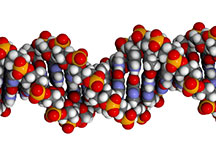| The Consultant Connection features unique solutions designed for consultants to help you and your client be more productive and successful. |
Developing a Strong CDx Strategy |
FOLLOW US |
 |
| This issue of Consultant Connection discusses how a strong understanding of companion diagnostics (CDx) can help you guide your client’s drug development strategy with a proven pathway to commercialization. |
 |
Past Consultant Connection Articles Missed a past issue? We’ve archived the content below. |
Contact Your Consultant Connectors |
CDx Resources |
While pharmaceutical and biotechnology companies recognize the value of a robust CDx strategy, they often have limited knowledge of the diagnostic industry per se and how to develop and commercialize CDx. As a consultant, you can fill a valuable role by helping your clients develop a comprehensive strategy that considers the needs of the various stakeholders who promote co-development of the drug and its accompanying (companion) diagnostic. Determining the best path for CDx development and commercialization requires a consideration of the entire development continuum, from preclinical studies involving novel biomarker development strategies to analytical and clinical validation, regulatory approval, commercialization and, ultimately, a successful market access strategy. At a high level, the two proven pathways to commercialization of a CDx are:
While both approaches hold distinct advantages, the two routes are not mutually exclusive. A deep understanding of each option can help you develop a strategy that aligns with the development of your client’s therapeutic. Considerations for CDx Success The field of CDx is advancing quickly as the focus expands beyond oncology to other therapeutic areas. Many factors, such as technology advances in complex genomics (Next Gen sequencing and multiplex genomic assays) as well as continually evolving regulatory requirements are further changing how drug development programs incorporate CDx strategies. Through our experience in supporting more than two-thirds of all FDA-approved CDx assays, we’ve consistently seen the following trends emerging:
Incorporating a CDx strategy can result in significant reward, but it requires additional coordination and considerations. A holistic approach that encompasses the perspectives of regulatory agencies, payers, manufacturers and CROs is required to achieve commercial viability of the drug and CDx product co-development. Learn more about how you can integrate technical capabilities, navigate regulations and leverage our global network to advance your clients’ personalized medicine programs. |
Due to the growing interest in “personalized medicine”, your clients may be asking you about developing a biomarker strategy to support the use of their compound as a tailored therapeutic. Companion diagnostics are at the heart of these strategies, enabling physicians to identify which patients will best respond to a given therapy in order to select the right drug, for the right patient, at the right time and in the right dose. |
 |
Lecia Johnson and her team are standing by to provide consultants with seamless access to Covance global solutions—nonclinical through clinical. Contact us today—we look forward to helping you succeed. |
 |



